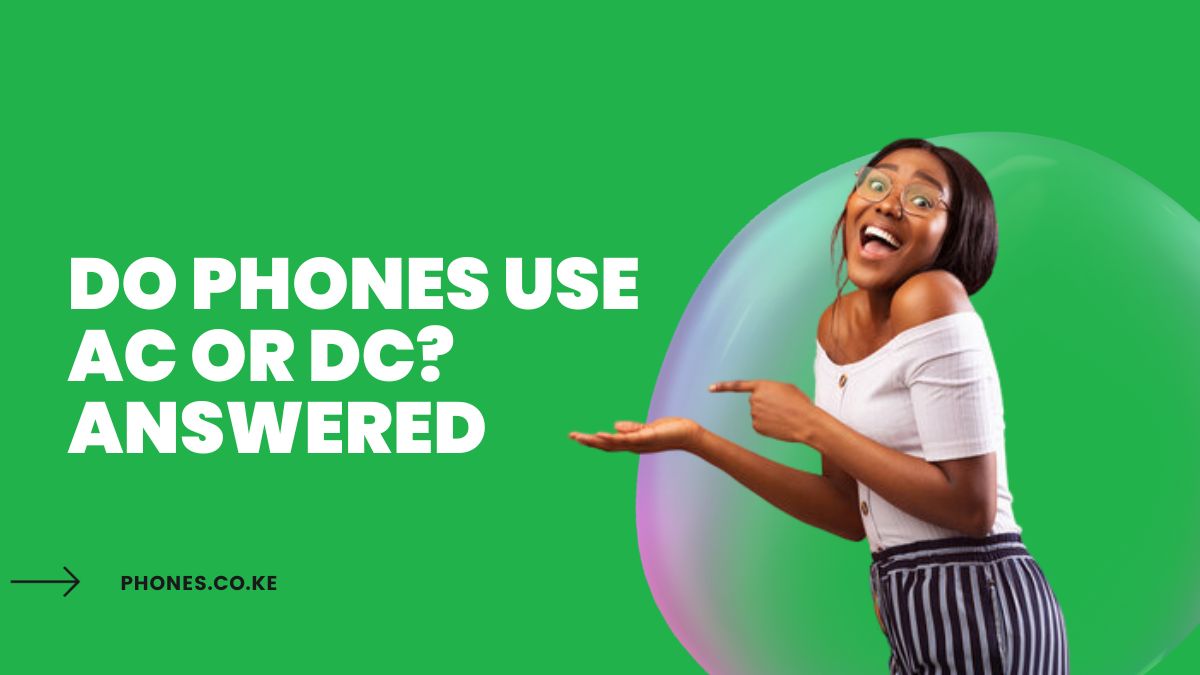Do Phones Use AC or DC? Answered Leave a comment
We’ve all heard the age-old question: do phones use AC or DC? For years, people have been wondering what type of electricity powers our beloved devices. Now, after much research and debate, we finally have an answer. In this article, we’ll explore the complex issue of phone power sources and offer a definitive conclusion to this longstanding debate. So if you’re curious about how your phone works – read on!
AC or DC: The Basics
When it comes to power sources, there are two main types that we need to consider: AC (alternating current) and DC (direct current).
First of all, AC is the type of electricity that flows through our homes and offices. It alternates direction in a predictable pattern, traveling from one end of its circuit back to the other. In contrast, DC is static electricity; it moves in one direction only. This means that while both types have their advantages and disadvantages when it comes to powering devices, each has its own unique set of characteristics.
In terms of applications, AC tends to be more efficient for large appliances such as refrigerators and air conditioners because they require higher levels of energy than smaller devices like phones and tablets. On the other hand, DC can usually provide better performance for electronics with lower power requirements due to its direct flow path which reduces electrical noise interference.
The Pros And Cons Of AC Power
One major advantage associated with using AC power is that it’s much easier to regulate voltage levels with an alternating current compared to a direct one. This makes controlling large-scale equipment much simpler since you don’t need additional hardware or components like transformers. Additionally, since AC flows in both directions along a circuit line it’s possible for multiple devices connected on the same line – like lights on a ceiling fan -to share this energy without any loss in efficiency.
However, there are some potential drawbacks associated with using an alternating current supply too – mainly related to safety concerns if not managed correctly as well as increased costs due reduced efficiency at high voltages where resistance increases significantly (due primarily by heat losses).
The Pros And Cons Of DC Power
DC has several benefits over its counterpart when used appropriately. The first being cost savings since no extra components are needed when managing direct currents at low voltage levels as opposed to having specialized transformers required for larger scale operations running off an alternating supply.
Another key advantage here is increased reliability due largely in part by avoiding any electric noise issues commonly encountered while working with inductive loads (such as motors) operating off an alternating source.
Unfortunately though despite these positives direct currents do come up short against their opposite number when considering overall efficiency across long distances or under heavy load conditions; something which could become problematic especially if you were planning on connecting multiple pieces together into complex systems or grids requiring uniformity throughout.
Which Type Is Best For Phones (AC Or DC)?
So now onto answering the million dollar question – what type should you use? Generally speaking most phones today will use either form depending on how they’re designed but generally speaking most mobile handsets tend rely upon direct current supplies instead because they typically operate at lower wattage ratings meaning less total energy consumed during operation..
. This also helps reduce weight/bulkiness thanks partially due smaller size batteries required compared those needed if using alternate forms thus boosting portability too.. However just keep mind certain features requiring slightly more juice may run off conventional outlets instead so always best double check specifications beforehand just case ..
.
How Does This Impact Your Phone’s Battery Life?
When evaluating battery life between different models two things are important take into account – 1) the total amount of charge stored inside the cell itself & 2) rate discharge/consumption .
Although difficult say exactly model performs better until tested real world scenarios, typically see faster drain rate dc based units given higher wattage requirements needed while processing data sending/receiving signals etc .
That said however newer smartphones feature advanced technologies allowing them conserve energy even further extending lifetime usage considerably(depending device course ).
As result , ultimately depends personal preference whether prefer longer lasting traditional ac powered versions shorter battery lives ones operate exclusively via dc circuits.
What Are The Possible Alternatives To Ac / Dc ?
While majority modern day gadgets continue utilize classic methods mentioned above , few recent innovations allow us look beyond traditional solutions giving option alternative ways powering our tech tools .
One example would solar panels capable producing enough volts recharge smartphone anywhere anytime regardless access external outlet.
Other idea involves kinetic chargers harvesting wind movement create small amounts usable electricity similarly car engine vibrations converted usable watts charged via usb cable directly device itself.
All interesting concepts yet hard tell widespread adoption near future remains seen…
Are There Any Other Factors To Consider When It Comes To Phone Power Sources?
Aside actual mechanics involved choosing right source another equally important factor worth mentioning regarding phone charging relates environmental impact products generate.
By far biggest culprit here being lithium ion batteries found almost every handheld device today unfortunately hazardous materials contained within them leading potentially dangerous consequences including fires explosions toxic fumes emitted after disposal improperly handled etc…
Solutions addressing issue include recycling programs available many countries around world helping promote responsible disposal practices offset negative effects bring about.
With advancements made renewable energies each passing day hopefully soon find ourselves closer towards greener tomorrow devoid harmful chemical waste generated older technologies …


